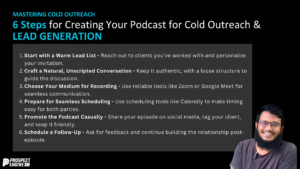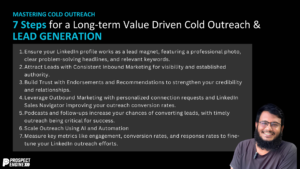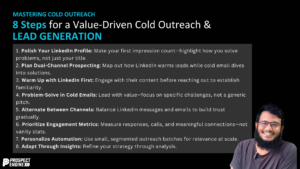Social Media Engagement is when a follower reads, reacts, clicks, and shares your post instead of just looking at it. It’s the difference between a muted impression and a friend enthusiastically recommending your company to everyone they know. Social involvement makes users concerned about your brand’s success, not just themselves. They become your unpaid marketing allies and advocates. Today’s stream scanning and short attention spans make interaction harder than ever. Posting passively is outdated. Audience engagement demands excitement, interest, enjoyment, and coercion.
Benefits of Social Media Engagement
What is Social Media Engagement?
People’s social media interactions with your brand are called engagement. Likes, comments, shares, clicks, retweets, pins, etc. Users engage with your material when they do these.
Engagement indicates that consumers are actively interacting with your material. They’re telling you they like your content enough to interact with it.
Engagement measures how relevant and important your social post is, unlike followers or views. It shows their genuine interest in your brand.
Why Social Media Engagement Matters
Engagement means your target audience is paying attention. Without significant user engagement, following or impressions are insufficient.
Users that engage with your brand on social media are more inclined to buy. Social Media Engagement builds brand awareness and preference, moving customers along the marketing funnel.
Each user that shares and reacts to your material exponentially increases its reach. Word-of-mouth exposure is valuable.
Social media involvement fuels content visibility and brand connections. Quality involvement, not passive impressions, is key to social media success.
Increases Brand Awareness and Reach
Users who like, share, comment, and interact with your social material exponentially increase their reach. Engaged users promote your content to their own networks. This viral impact can boost brand awareness significantly.
Money can’t purchase word-of-mouth marketing like social involvement. Emotional or controversial material gets significant engagement and strong user reactions. This high amount of visible interaction tells social platforms the information is relevant. A viral engagement loop ensues as platforms share the information.
Drives Website Traffic
Social media feeds introduce many visitors to new websites and blogs. Engaging with a social post allows them to visit the site to discover more.
Social traffic—inbound clicks from social platforms—can be a key source of website visits. Social media participation boosts site exposure and qualified traffic. More engagement means more traffic.
Boosts SEO Through Shares and Links
Social sharing and links to your content and site pages boost SEO. Google and Bing trust your material when other credible sites and profiles connect to it.
Sharing your pages boosts domain authority and external inbound links. More shares increase SERP indexation and visibility. A page’s search performance can increase with social sharing.
Provides Market Insights from User-Generated Content
Social media interactions like replies, comments, reviews, Q&A, surveys, and more reveal customer insights. Qualitative data illuminates your audience’s preferences, pain points, emotional triggers, and intent signals.
Monitor social listening to see how people react to your messaging, goods, and campaigns. Social surveys quickly reveal consumer preferences. User feedback identifies issues.
Enhances Brand Loyalty and Advocacy
Social media users who interact with your brand often build an emotional connection. They adopt the brand as part of their social identity.
This builds market-resistant loyalty. They become brand advocates who promote and defend the brand without compensation. They offer feedback and reviews to show support.
Generates Word-of-Mouth Marketing
Social media users who interact with your brand often build an emotional connection. They adopt the brand as part of their social identity.
This builds market-resistant loyalty. They become brand advocates who promote and defend the brand without compensation. They offer feedback and reviews to show support.
Creates Opportunities for Conversion
Users learn more about your products and services as they interact with your business on social media. This familiarity makes consumers more likely to buy or use your product.
Using interest and interaction history, social engagement metrics can identify hot leads. Target hyper-engaged users as high-conversion possibilities.
Allows for Real-Time Customer Service
Social media allows quick customer and prospect connections. You may respond to remarks and questions in real-time with social listening.
This kind of rapid customer care and problem resolution boosts brand perception. Quickly resolving negative social engagements can save reputation. Real-time engagement humanizes brands.
Helps You Evaluate Content Performance
The interaction on a social post indicates its audience appeal. Content planning is informed by engagement rates, clicks, and conversions for different formats and topics.
You can determine which content themes are most engaging. This lets you repeat successes and remove failures. Engagement metrics optimize content calendars.
Enables Targeted Communication with Audience
Social platforms provide expansive targeting options. Once you identify groups within your audience that engage highly with certain content, you can define similar audience segments to target.
For example, lookalike audiences mirror the demographics of existing engaged users. Retargeting engagers with ads nurtures them further. Dynamic creative optimization shows them content they previously engaged with.
How to Measure Social Media Engagement
Key Metrics to Track
There are a variety of metrics that can quantify social media engagement. It’s important to look beyond vanity metrics like followers or likes and analyze actions that demonstrate true engagement.
Some key engagement metrics to track include:
– Shares – how often content is shared indicates amplification
– Comments – shows users are interacting with content
– Clicks – click-through-rate measures interest
– Reactions – emojis/buttons that express sentiment
– Mentions – how often others reference your brand
– Retweets/Reposts – resharing content to new networks
– Link clicks when shared – engagement with content
– User-generated content – fans creating brand content
Each platform has its own versions of these metrics available. Monitoring them helps gauge genuine engagement levels.
Calculate Engagement Rates
Divide engagements by reach or impressions to calculate the engagement rate. This normalizes engagement by audience size.
Divide all post engagements (likes, shares, etc.) by the number of viewers. Controls reach differences.
Industry and platform benchmark engagement rates vary greatly. Trends are best identified by comparing rates over time.
Track Brand Mentions and Sentiment
Social listening technologies find brand and product references in tweets, comments, reviews, etc.
Engagement measures include mention volume and emotion (positive, negative, neutral). Mention or sentiment spikes can signal opportunities or catastrophes.
Brand monitoring shows client requirements and perceptions directly. The raw qualitative data boosts quantitative engagement measurements.
Compare Engagement Across Platforms
Platform-specific engagement levels vary greatly. Compare analytics from your active social platforms for a holistic picture.
Assess which platforms and content kinds engage most. Find engagement gaps between competitors. Design platform methods that engage your specific audience.
Ongoing benchmarking ensures you invest in legitimate engagement platforms alone.
Tips for Improving Engagement
Share Varied and Useful Content
Quality and variety of material greatly affect engagement. Users tune out after seeing repetitious or dull material.
Create a useful and entertaining content calendar. Mix video, live stream, Story, reel, infographic, Q&A, and list forms. Diversify themes and styles to keep interest. Write content with the audience in mind.
Respond and Interact With Your Audience
Social media works both ways. Broadcasting content is insufficient. Respond actively to comments, questions, and feedback.
User engagement increases when you show you are listening and interested in interacting. Ask followers questions to open dialogue. Tag users for rapid responses. Be helpful and friendly to humanize your brand.
Use Hashtags and Tag Influencers
Strategic hashtags and influencer tags increase content reach to interested audiences. Include specialist community hashtags and identify industry leaders to reach relevant audiences currently discussing those topics.
Users will be more likely to engage with your content if it’s tagged in relevant discussions. Search keywords for topical hashtags and follow influencer tagging best practices.
Run Contests and Giveaways
Prizes in contests, sweepstakes, and freebies encourage participation. Entrants must follow, like, comment, tag friends, or share to drive desired behavior.
Make entry easy by taking little time or effort. Give away discounts, access, freebies, etc. to your target demographic. Announce winners to verify their validity.
Ask Questions to Spark Conversations
Asking intriguing or challenging questions in your content gets users thinking and motivated to respond. This sparks in-depth conversations rather than one-off reactions.
Promote discourse by leaving questions open-ended rather than yes/no format. Tie questions to emotions for more candid reactions. Once you get some initial comments, engage individually to keep the dialogue going.
Leverage Videos, Images, Polls and Other Interactive Formats
Videos, Stories, live streams, gifs, infographics, polls, and other visuals get more attention than text statuses.
Feeds highlight creative photos and designs. Stories and videos are more engrossing. Use polls and Q&As to make engagement easy.
Short, snackable material performs better since it’s easier to consume and react to. Try multiple forms to see what your audience likes.
Partner With Influencers and Industry Peers
Influencer collaborations reach engaged audiences. Let target demographic influencers co-create or obtain early access to content.
Ask recognized industry colleagues or brands to promote your content. This reaches active, interested communities. Develop win-win partnerships that benefit collaborators.
Analyze Top Performing Content
Review past material to find patterns in audience-grabbing items. Check clicks, completion rate, reactions, and comments.
Which subjects, hooks, headlines, and forms were most engaging? Visuals or videos outperform text? Which feelings cause reactions? Reverse engineer your top content’s appeal.
Conclusion
The Critical Importance of Social Media Engagement
As demonstrated throughout this post, actively engaging your target audience on social media channels benefits brands of all sizes across several crucial metrics.
Quality social engagement is crucial since it boosts awareness and revenue.
Brands lose organic reach amplification, website traffic, market insights, loyalty-building, and conversion prospects without engaging in social content.
Prioritizing engagement turns social followers into brand advocates who promote you through their networks. Authentic peer advocacy is invaluable.
Start Measuring and Testing to Boost Engagement
Now that you understand the many benefits of earned social media engagement, track engagement numbers and identify areas for improvement.
Examine how your best content engages readers. Try new content formats, topics, and delivery methods. Be thoughtful with your audience.
Due to social media’s virality, little engagement efforts can pay off massively.
Integrate social engagement into your marketing strategy to turn impressions into interactions and passive viewers into evangelists. The benefits will be beneficial to your brand.
This expanded conclusion emphasizes engagement, references key points from the piece, and closes with a CTA to encourage social participation.





